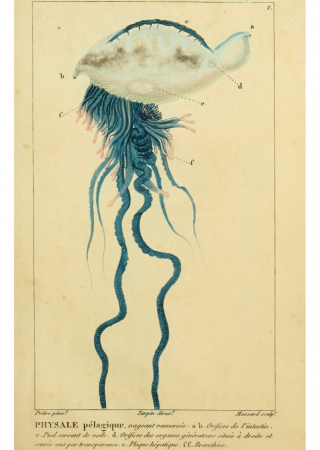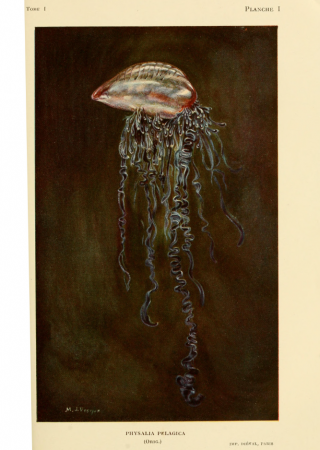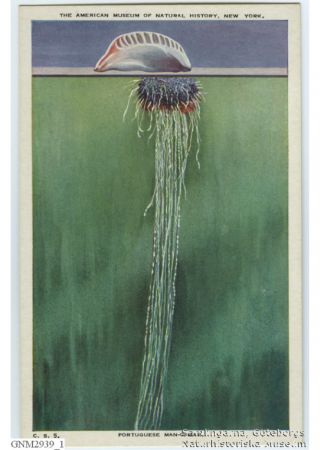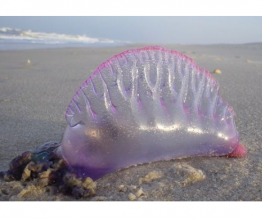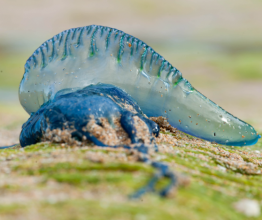Portuguese Man-Of-War
- ...the nine-meter-long tentacles of this siphonophore are equipped with up 750,000 stinging cells (cnidocytes)?
- ...the Portuguese Man-of-War was named by northern seamen sailing to the Mediterranean, since they are often found along Portugal's coast?
- ...some scientists compare the Man-of-War's venom to that of a cobra?
- ...the only creature who is immune to the Man-of-War's sting is the tiny man-of-war fish (Nomeus gronovii), which often hides among the tentacles?
- ...the man-of-War's stinging tentacles can grow up to 30 meters?
- ...the Man-of-War's "body" is actually a colony comprising numerous individuals creatures (polyps), specialized for movement, capturing prey, reproduction, etc.?
Basic information:
Phylum – Cnidaria
Class – Siphonophora
Maximum length – 30 meters
Food – small fish and plankton
Distribution – warm seas and oceans all over the world
Type of poison – neurotoxin?
Distinguishing marks:
The colony has the shape of an inflated bladder of changing colors, filled with gas. The lower surface carries aquamarine-colored tentacles, reaching up to 30 meters in length.
Although it superficially resembles a medusa, the Portuguese Man-of-War is actually a member of the Siphonophora order. As opposed to a medusa, its body is not that of a single organism, but actually a colony of hundreds of individual creatures. Sometimes these organisms swarm along a beach and pose a danger to swimmers. Contact with a tentacle produces a stinging sensation, comparable to a nettle sting. The skin can peel, or may become red and blistered. More sensitive individuals may experience nausea and vomiting. A serious danger is cramps, which may lead to drowning if the water is deep.

